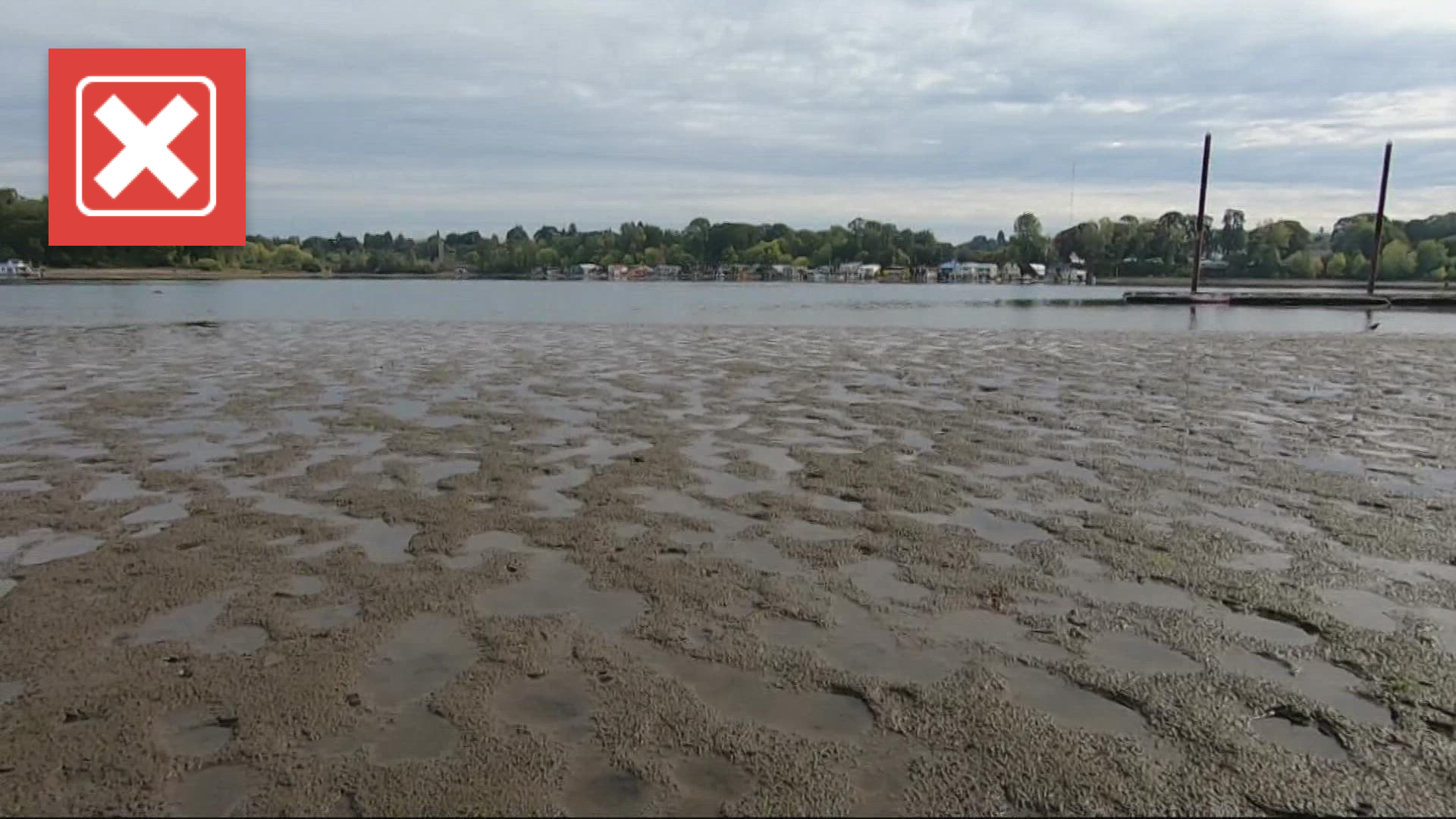PORTLAND, Ore. — Muddy river beds, never-seen-before sandbars and all sorts of strange things that used to be underwater are now exposed.
They are all clear signs both the Willamette and the Columbia rivers are running unusually low.
"Nothing compared to what we should have right now," said boater Liam Kohns.
In fact, Kohns told KGW he had to cut his boating trip short because he worried he'd get stuck in the mud if he didn't.
"The river's extremely shallow," he said. "It's very dangerous especially heading south with how shallow it is."
National Weather Service hydrologist Andy Bryant pointed out we always see lower river levels this time of year, but this fall levels have been exceptionally low.
"They're particularly low this year because of the ongoing drought conditions that we had really driven by the dry conditions from March through May," he said.
Because of the drought, the period of low river levels started earlier and is lasting longer. Any rain that does fall gets absorbed by the thirsty earth.
"The soils in the area are just saying 'Hey, well, we'll take that water, we'll just soak it right up,'" he said. "Not a lot of it's going into the rivers right now."
Bryant said last week, the Columbia and Willamette dropped to levels they hadn't been to in five years.
"But the good part about these low levels is that they are only during the low tide portion of the tidal cycle," he explained.
So if a boater does get stuck, they just need to wait a couple hours for high tide.
For the rest—they'll just need to wait a few more weeks. Once the November rains come, the rivers will rise again.
But next fall we should expect a repeat of this fall— another longer than typical stretch of low water. Another subtle sign of a changing climate.
"Just more extremes," said Bryant. "So this would be, then, one of the impacts of more extremes."

